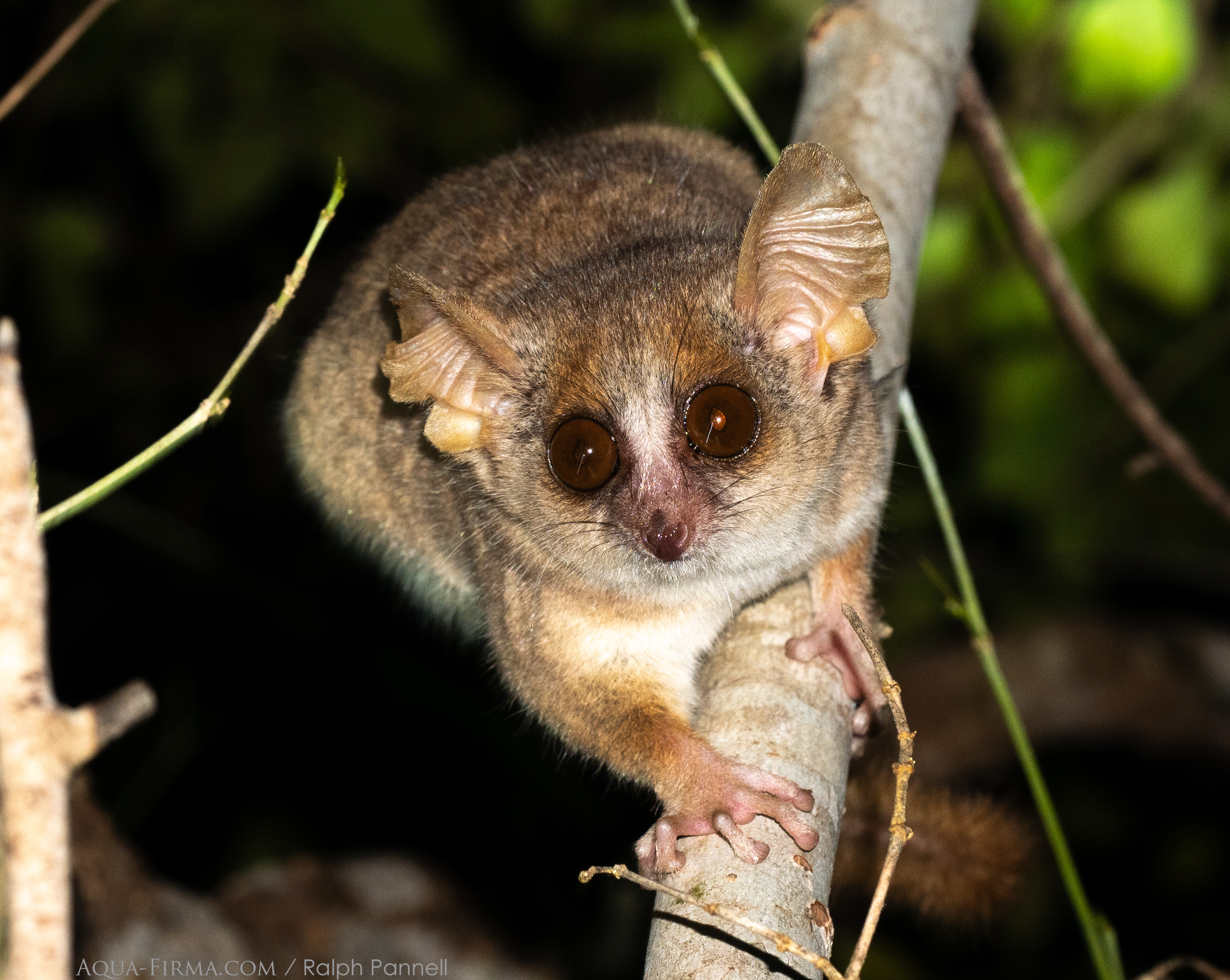Lemurs, Golden Frogs & New Rainforest Reserve
Madagascar
1st - 8th October 2026
hosted by directors of Aqua-Firma & partner conservation NGO
Mouse lemurs are the smallest known living primates on Earth, with ongoing debate over which mouse lemur is the smallest. Of 24 different species, the smallest is either the Pygmy Mouse Lemur (average length of 12cm and weight of 50g); or Madame Berthe's Mouse Lemur (average length of 9.2cm and weight of 33g), which we find almost exclusively in the western dry forests of the Kirindy National Park and the Marofandilia Forest Reserve. At the largest end of the spectrum, with find the Gray Mouse Lemur, whose average weight is 60g; length 13cm.
Common to all mouse lemurs is a proportionately small brain, weighing in at just 2 grams - the smallest of any primate. All species are nocturnal, so they have enlarged eyes to help them cope with low light conditions. They have also evolved developed diverse vocal systems in order to communicate with other lemurs in darkness.

The diets of mouse lemurs usually comprises of fruit, tree sap gum, insects and small vertebrates. During the leaner dry season when there is less food, some mouse lemurs are able to slow down their metabolism to conserve water and energy. Their main predators include owls, hawks such as the Madagascar Harrier Hawk (Polyboroides radiatus), snakes such as the Madagascar Tree Boa (Sanzinia madagascariensis) and Madagascar's apex predator, the Fossa (Cryptoprocta ferox).
Mouse lemurs are surprisingly similar to Dwarf Lemurs in many ways, including their appearance and some behaviour. One of the apparent differences between these two branches of Cheirogaleidae family primates, is the fact that mouse lemurs tend to congregate in large groups of males or females; whilst dwarf lemurs prefer to live in dispersed monogamous groups. Another vital difference between these lemurs is where they decide to nest. Mouse lemurs typically arrange leaves in order to form a nest-resembling structure, whereas dwarf lemurs use tree-hollows to nest in. Both types of lemur are nocturnal and may store fat in their tails.
Despite the populations of mouse lemurs being some of the highest in Madagascar of any lemur type, many of the different species of mouse lemur are labelled as endangered, or even critically endangered e.g. Madame Berthe's Mouse Lemur (Microcebus berthae). The cause of this population decline is mostly down to deforestation as a result of slash-and-burn agriculture. The IUCN predicts that Madame Berthe's Mouse Lemur will become extinct within 10 years if the rate of deforestation in western tropical dry forests continues at the same rate.
See below for some of our trips you can join to see Mouse Lemurs.